Travel Tales from The Hub
Traveling Light In Our Nations First National Park

By Ken Hubbard
In March of 1872 Ulysses S. Grant signed a law making Yellowstone our nations first National Park. Spanning more than 3,448 square miles and filled with geysers, hot springs, boiling mud pots and a super volcano, Yellowstone National Park is truly one of the most awe-inspiring places on the planet. As a photographer, you can travel across this park photographing it from morning to night for weeks on end, and never feeling satisfied you were able capture it all.
Recently, I was fortunate enough to go on assignment in Yellowstone for Tamron USA to help create a video for a new lens release (18-400 Di II HLD PZD). With only four days of shooting time and trying to capture the best of this wondrous National Park, traveling light and fast was the only way to do it. This also led to very little sleep and hundreds of miles of driving over the mountains and through the valleys each day, but we managed to capture hundreds of images and create a beautiful video. Click here to see video: https://youtu.be/r7ecTQdJQQY
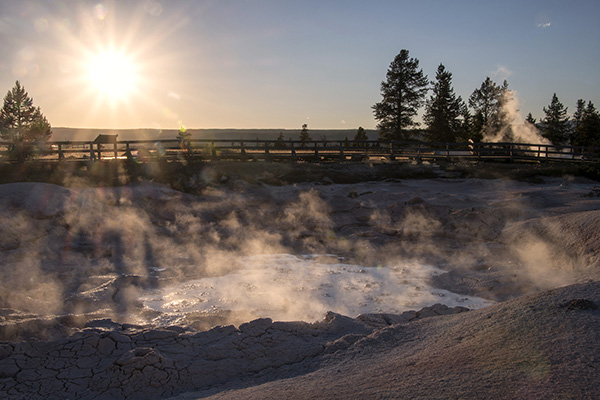
Tamron 18-400mm Di II HLD PZD: 1/30 sec, f/22, ISO 100 @ 27mm
Lower Geyser Basin
Some of my favorite thermal features and sunset locations are found within this 12 square mile section of the park, one of them being the Fountain Paint Pot area and trail. This short walk will loop you around to see up close views of geysers, paint pots and steaming fumaroles. During the day it can be very crowded and hard to find a parking spot, so my suggestion is to go about 1 hour before sunset when the crowds start to thin out dramatically. As the sun makes its way to the horizon it will back light the rising steam coming from the earth with beautiful warm light creating a stunning visual experience.
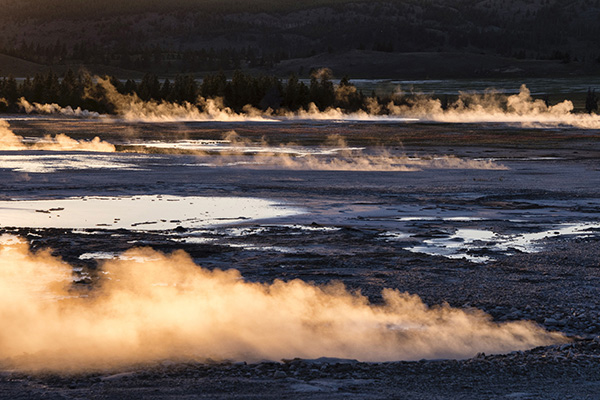
Tamron 18-400mm Di II HLD PZD: 1/320 sec, f/11, ISO 400 @ 100mm
Clepsydra Geyser may not be the largest in the park, but it is one of the most consistently erupting ones. Named after an ancient clock that measures time using water flow, this geysers constant eruption was caused by an earthquake in 1959. With its constant action and western viewing position from the boardwalk it is the ideal subject for sunsets. Be it a colorful partly cloudy sunset or one with perfectly clear skies, you can frame your images of this subject so many dramatic ways.
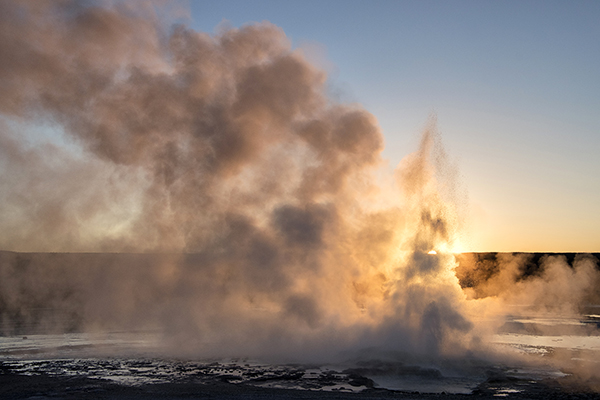
Tamron 18-400mm Di II HLD PZD: 1/1000 sec, f/8, ISO 400 @ 35mm
Fire Hole Road is another amazingly beautiful loop that will take you past stunning features such as Fire Hole Spring, Great Fountain Geyser, White Dome and Fire Hole Lake. The geysers on this loop erupt “somewhat” predictably with Great Fountain going on display every 8 - 12hrs and White Dome every 10 minutes – 3hrs. To help you predict what time to be at these locations, check out Geyser Times website: http://geysertimes.org or download the NPS App for Google and iPhone called NPS Yellowstone Geysers.
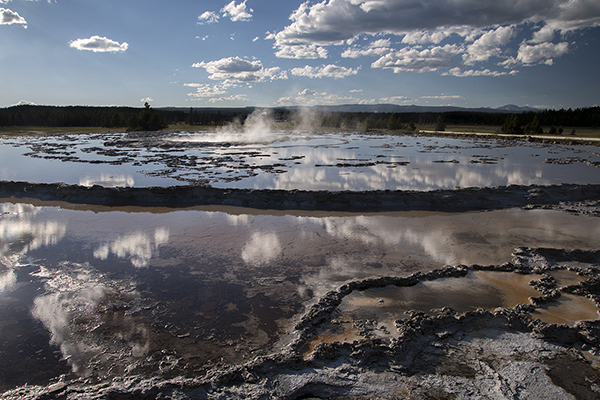
Tamron 18-400mm Di II HLD PZD: 1/60 sec, f/16, ISO 100 @ 18mm
Mammoth Hot Springs
No trip to Yellowstone would be complete without visiting the Mammoth Hot Springs area. For thousands of years this ever-changing colorful formation was, and still is, being created by the hot spring water rising up and then cooling down as it hits the air and then flows down its sides depositing calcium carbonate. Boardwalks once again allow you to make your way up and down the steep terraces of this unearthly location. For me this spot is ideal for sunrise, so get there early so you have plenty of time to walk around and just take it all in and capture images before the crowds show up.
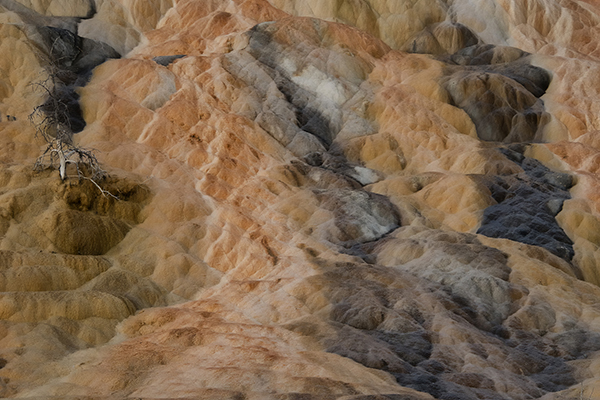
Tamron 18-400mm Di II HLD PZD: 1/40 sec, f/11, ISO 640 @ 92mm
Try to be at Canary hot spring and terraces for sunrise, this will provide you with a truly jaw dropping experience. The spring was named for the yellow colored filamentous algae that grows along these terraces. The combination of this beautiful yellow, soft orange and brown colors, creamy like texture and rising steam makes this one of the most spectacular spots for capturing sunrise in Yellowstone. The viewpoint at the end of the boardwalk will give you one of the best locations to capture photos. Unfortunately, it is not a very large vantage point so plan on getting there before the sun crests over the mountains so you can get an unobstructed view. The sun will rise from the side and just enough behind the spring, back lighting the rising steam and creating warm highlights along the terraces.
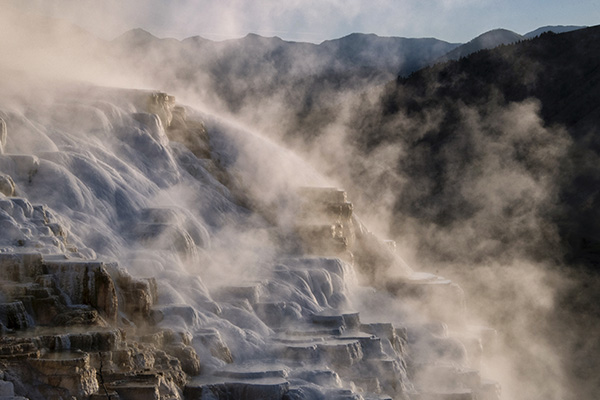
Tamron 18-400mm Di II HLD PZD: 1/160 sec, f/22, ISO 5400 @ 65mm
With so much to photograph and usually limited time to do so, plan your photographic journey through this majestic park well in advance of arriving. There will be very early mornings leading into late nights, but it will all be worth it when you sit down to edit your images and you are stunned by your images that captured its beauty.
I will continue this article with subsequent shorter articles on my facebook page: @TamronKen Hubbard
All Images were captured using Tamron’s 18-400mm Di VC HLD Lens: http://www.tamron-usa.com/product/lenses/b028.html